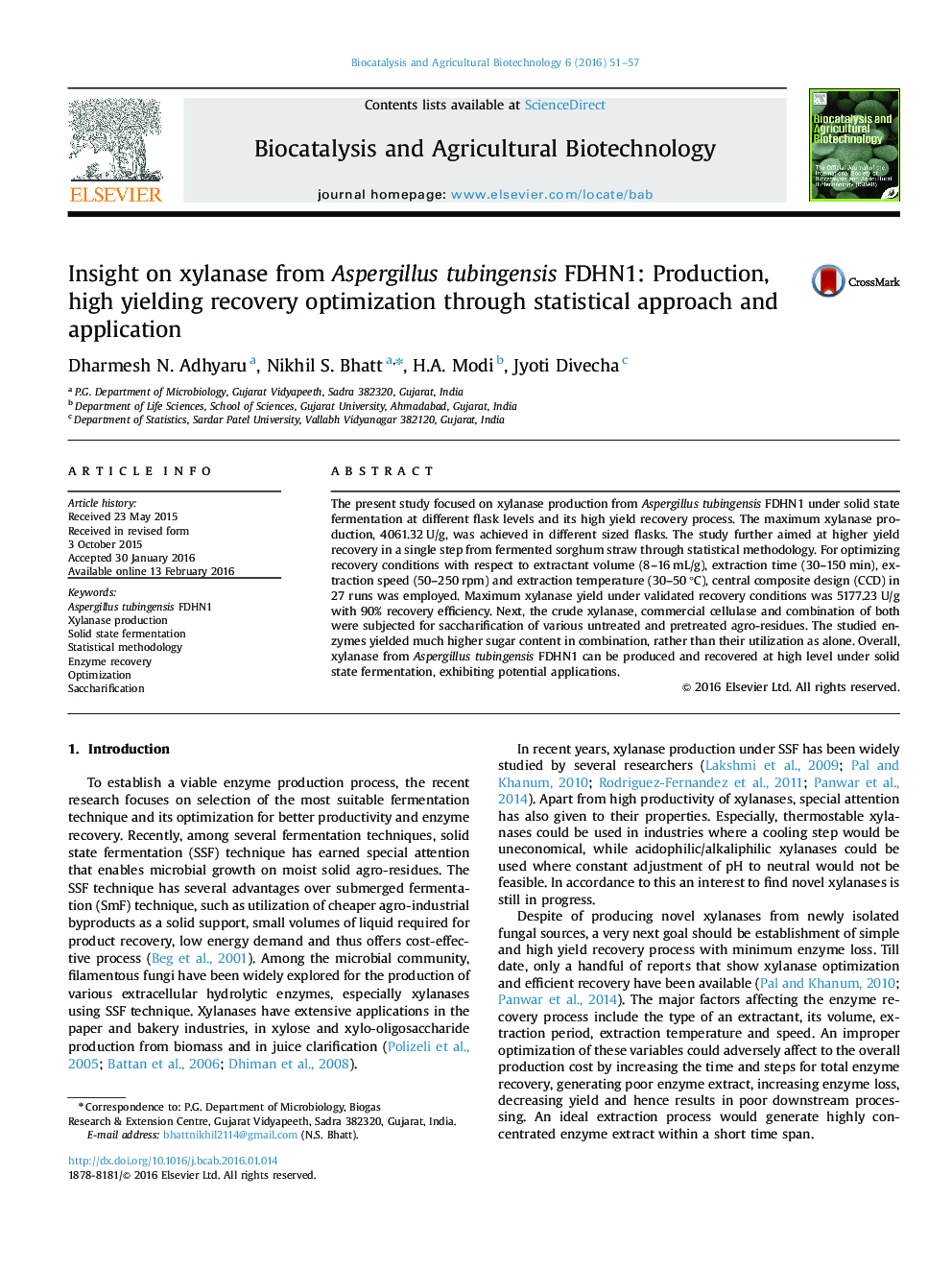| Article ID | Journal | Published Year | Pages | File Type |
|---|---|---|---|---|
| 2075399 | Biocatalysis and Agricultural Biotechnology | 2016 | 7 Pages |
•High xylanase production noticed at flask level scaled up conditions.•Application of statistical methodology for xylanase yield improvement.•% xylanase recovery efficiency reached to 90% under optimized conditions.•Combination of xylanase and cellulase was successfully applied for saccharification.
The present study focused on xylanase production from Aspergillus tubingensis FDHN1 under solid state fermentation at different flask levels and its high yield recovery process. The maximum xylanase production, 4061.32 U/g, was achieved in different sized flasks. The study further aimed at higher yield recovery in a single step from fermented sorghum straw through statistical methodology. For optimizing recovery conditions with respect to extractant volume (8–16 mL/g), extraction time (30–150 min), extraction speed (50–250 rpm) and extraction temperature (30–50 °C), central composite design (CCD) in 27 runs was employed. Maximum xylanase yield under validated recovery conditions was 5177.23 U/g with 90% recovery efficiency. Next, the crude xylanase, commercial cellulase and combination of both were subjected for saccharification of various untreated and pretreated agro-residues. The studied enzymes yielded much higher sugar content in combination, rather than their utilization as alone. Overall, xylanase from Aspergillus tubingensis FDHN1 can be produced and recovered at high level under solid state fermentation, exhibiting potential applications.
